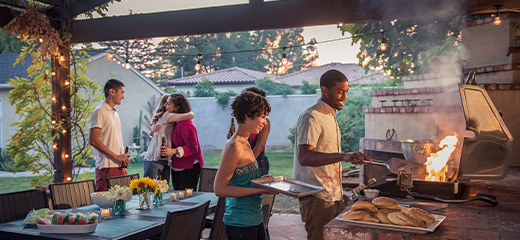
Tips for home boundary walls and fences
Psychologists will tell you that having personal boundaries is essential to your health, and the same can be said for your home. But what makes a good boundary wall or fence?
There are many factors that go into deciding which are the best options for your home’s road-facing and surrounding boundaries. The main areas that need consideration, however, are security, appearance, privacy and municipal bylaws.
Curbside appeal
The first thing people see of your home is your boundary wall or fence. No matter how good-looking or secure your home is, it is this first impression that lasts.
- Security: An important requirement for South Africans is that their boundary wall or fence acts as an obstacle and deterrent to would-be criminals. Before making your decision, take a walk through your neighbourhood to see how your ideas measure up against the rest of your community. Make sure your home isn’t going to be the easiest target in the area.
- Appearance: When it comes to your road-facing boundary, appearance really does make a difference – particularly if you are thinking of selling in the next 5 years. This is the first and last thing seen of your home, so make sure it is inviting to yourself and your visitors. Be sure to consider how your styling will compare to your neighbours to avoid standing out for all the wrong reasons.
- Privacy: This is always a difficult factor as you have to weigh up your desire to live your life away from prying eyes against concerns of giving criminals an easy place to hide. If you have a large back garden and don’t spend much time in the front of your property, you might not mind using fencing for your front boundary. If you have limited outdoor space available, however, you might want to go with a solid wall. Whichever choice you make, be sure to invest in enough motion-sensor lights to make it difficult for intruders to hide.
- Bylaws: Consult your municipal website for bylaws and regulations regarding road-side boundary walls and fences. Pay particular attention to stipulations on the distance your boundary must be from the curb, height limitations, safety and security restrictions, prohibitions and planning permission requirements. Most municipalities will allow you to build a wall up to 1.8 metres in height without having to submit plans.
Surrounding boundaries
They say good fences make good neighbours and for good reason too. While these walls and fences may not need the same strength and security features, you will still want your boundary to be properly marked and protected.
- Security: While your property may not be immediately accessible from your side and back boundaries, you will still want to have some protection from criminals that try to invade from your neighbour’s more accessible garden or escape through yours. If one of your walls backs on to open or municipal space, you will need to consider higher security measures to protect your home and family. Remember to make regular checks on the other side of this wall, as piled-up debris could provide easy access over your wall.
- Appearance: Maintenance of surrounding boundaries is often neglected, resulting in a shabby look to the property and damage to the structure. If you or your neighbour have dogs, it is particularly important to make sure there are no gaps that allow easy access between gardens. A regular coat of paint can keep your property looking respectable, while design features such as mosaics, trellises and climbing plants can enhance the whole look of your garden.
- Privacy: Nobody likes a nosy neighbour, particularly if you’re having fun in the pool with friends or a romantic garden picnic. While it may be impossible to protect your property from your neighbour’s prying eyes, you can use building materials or plants to improve the privacy of your space.
- Bylaws: In most municipalities, the ownership of the boundary wall is determined to be shared by the neighbours. This means that any changes or repairs to this boundary wall needs to be discussed with your neighbour. If your neighbour is unable or unwilling to agree to changes, you are allowed to build a second boundary wall or fence within your property line. Bear in mind that the foundations for the wall or fence need to be within your property line as well.









